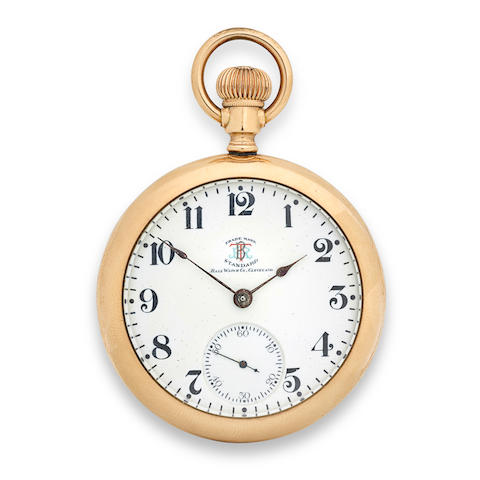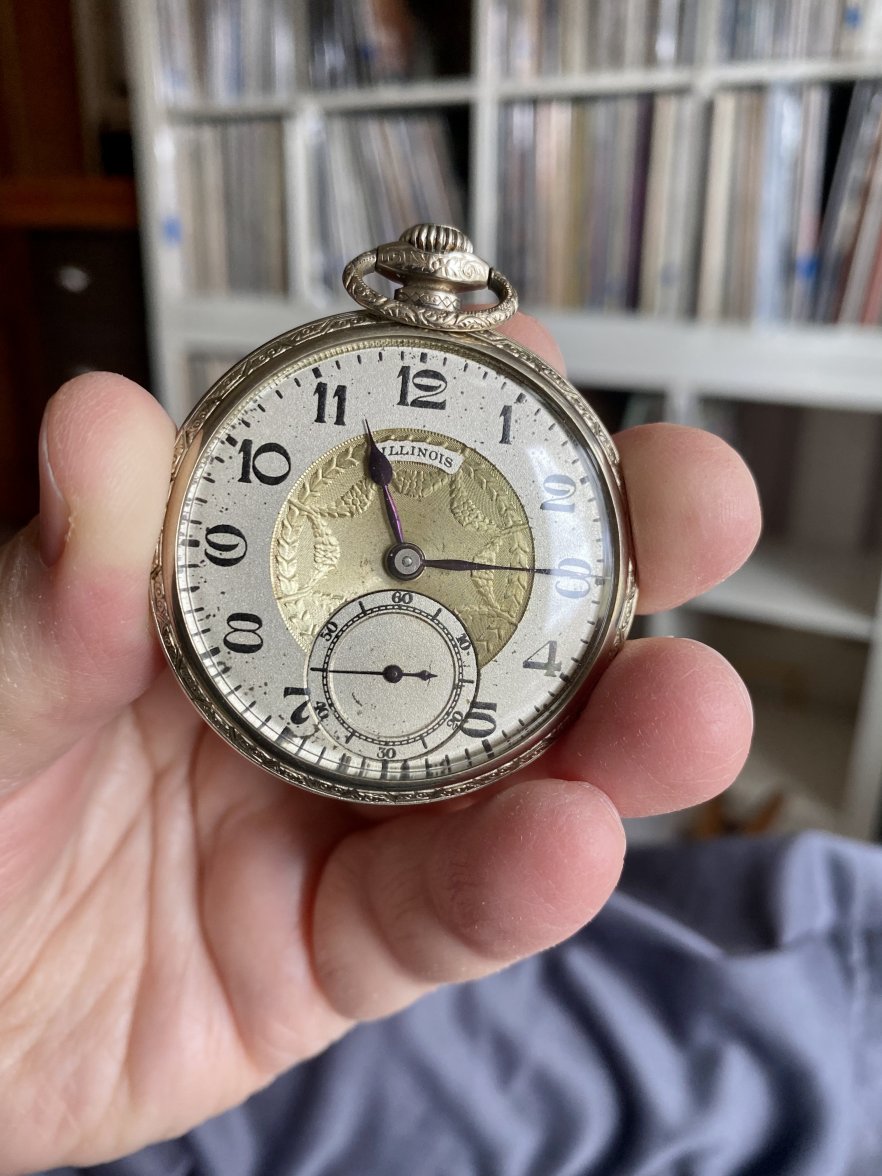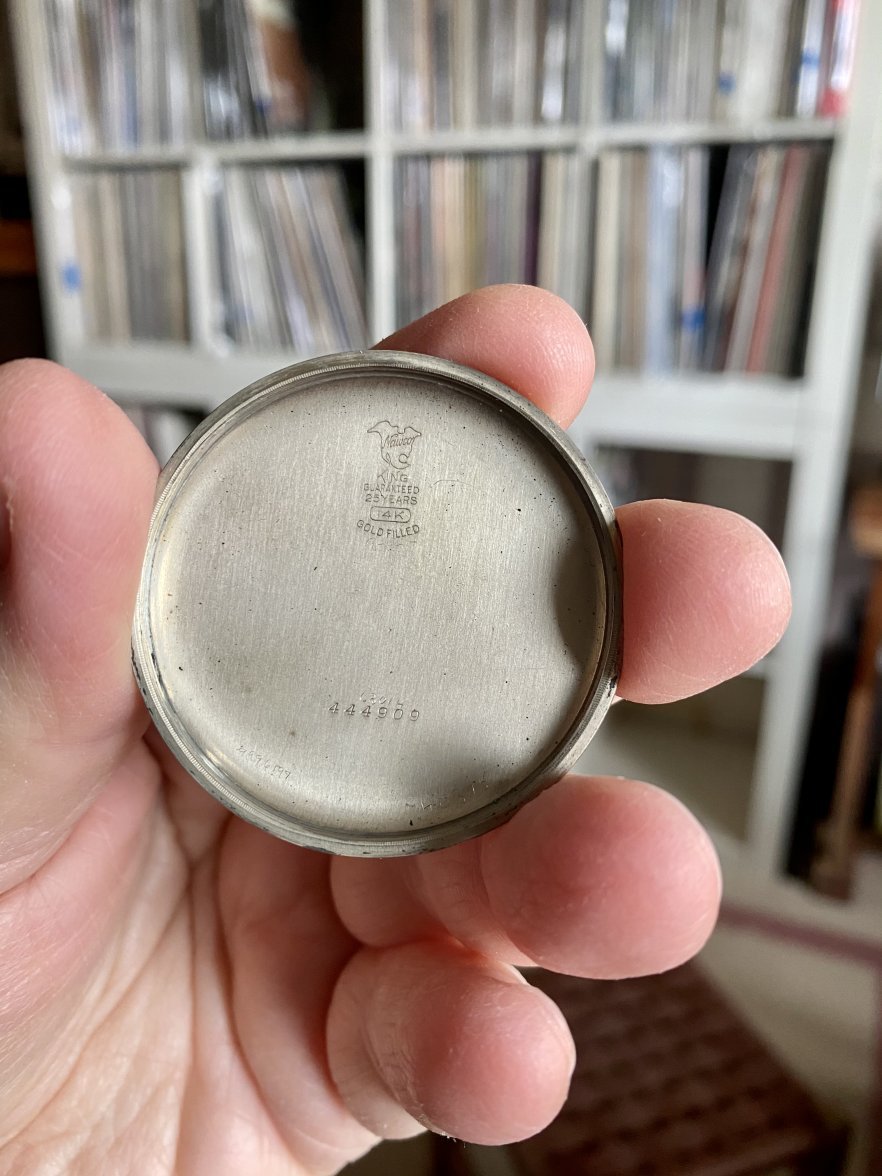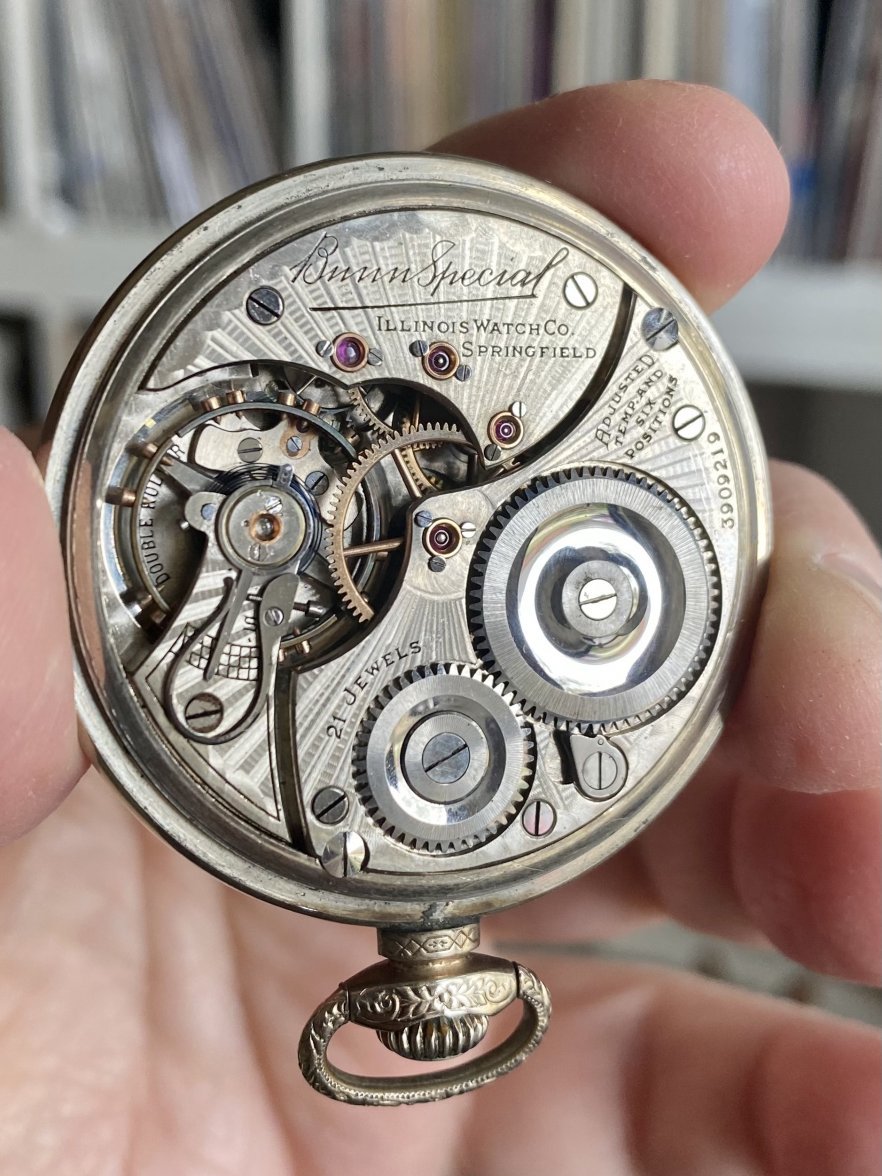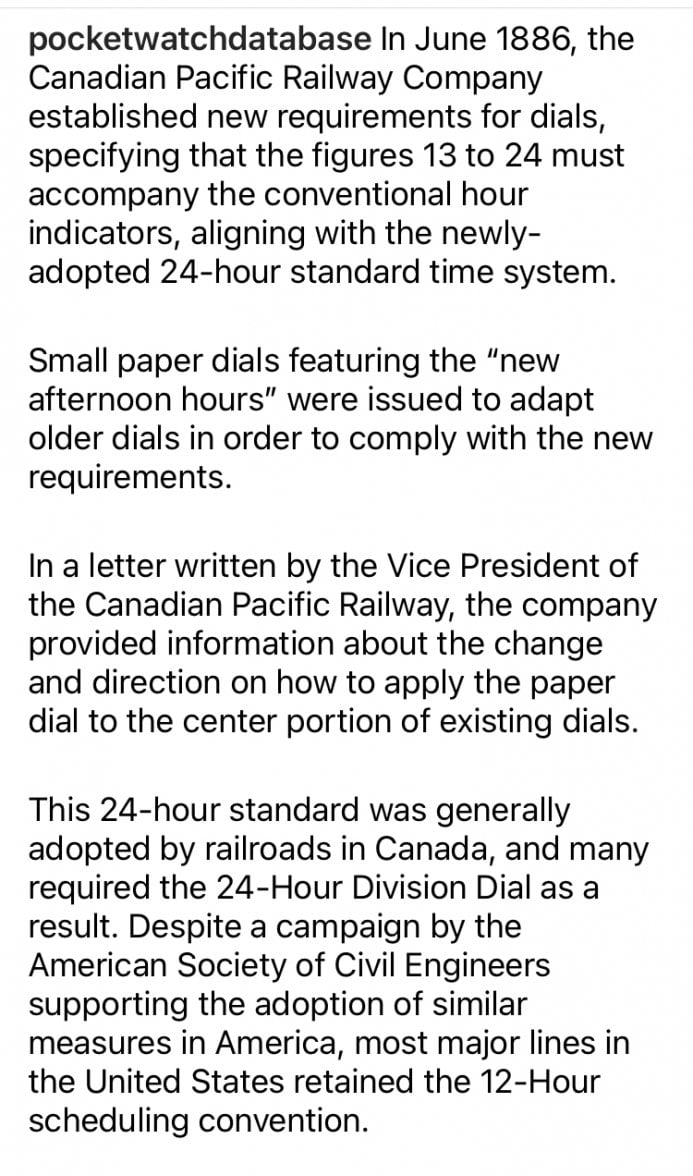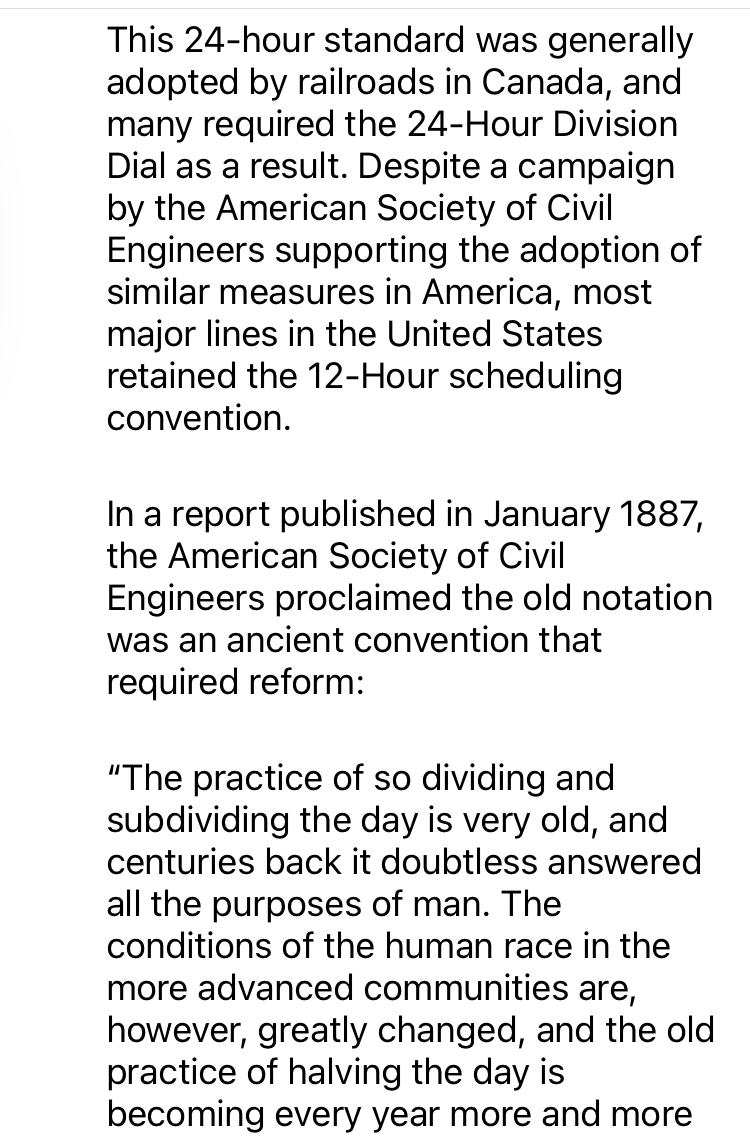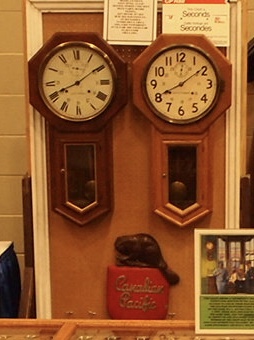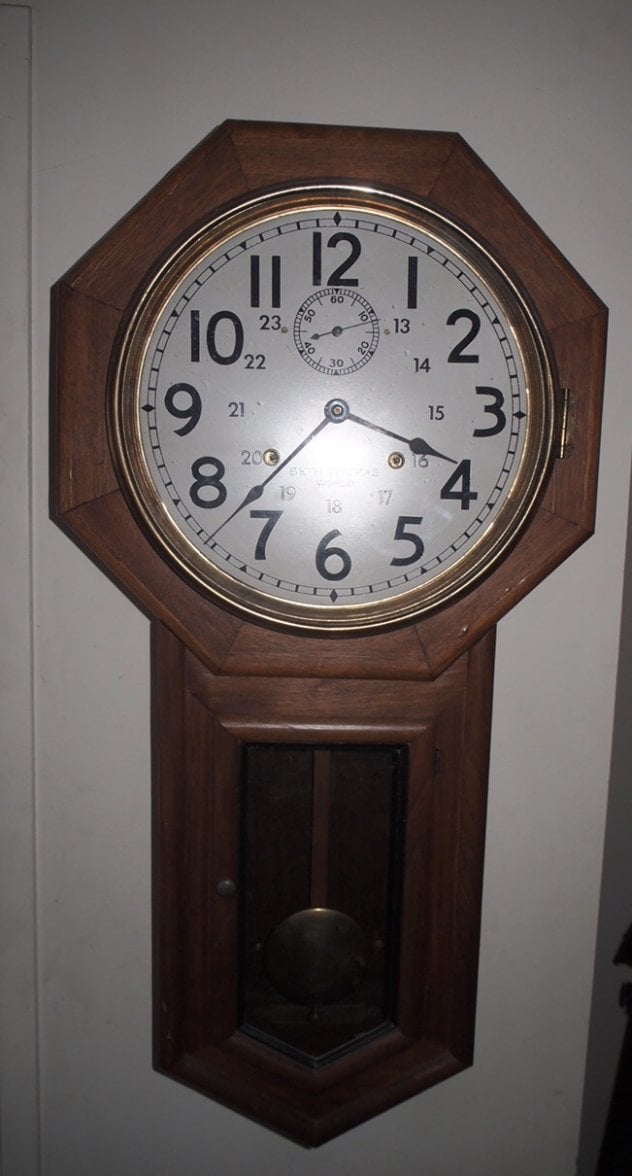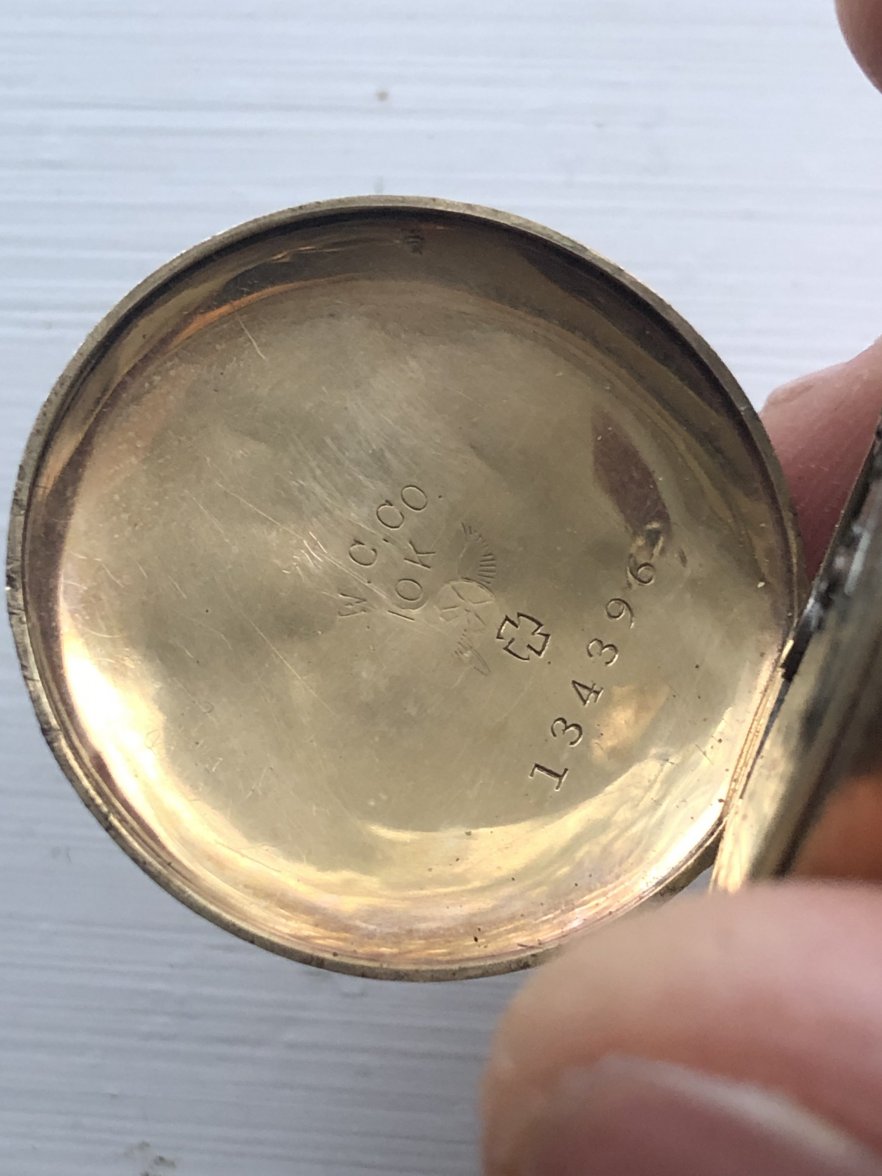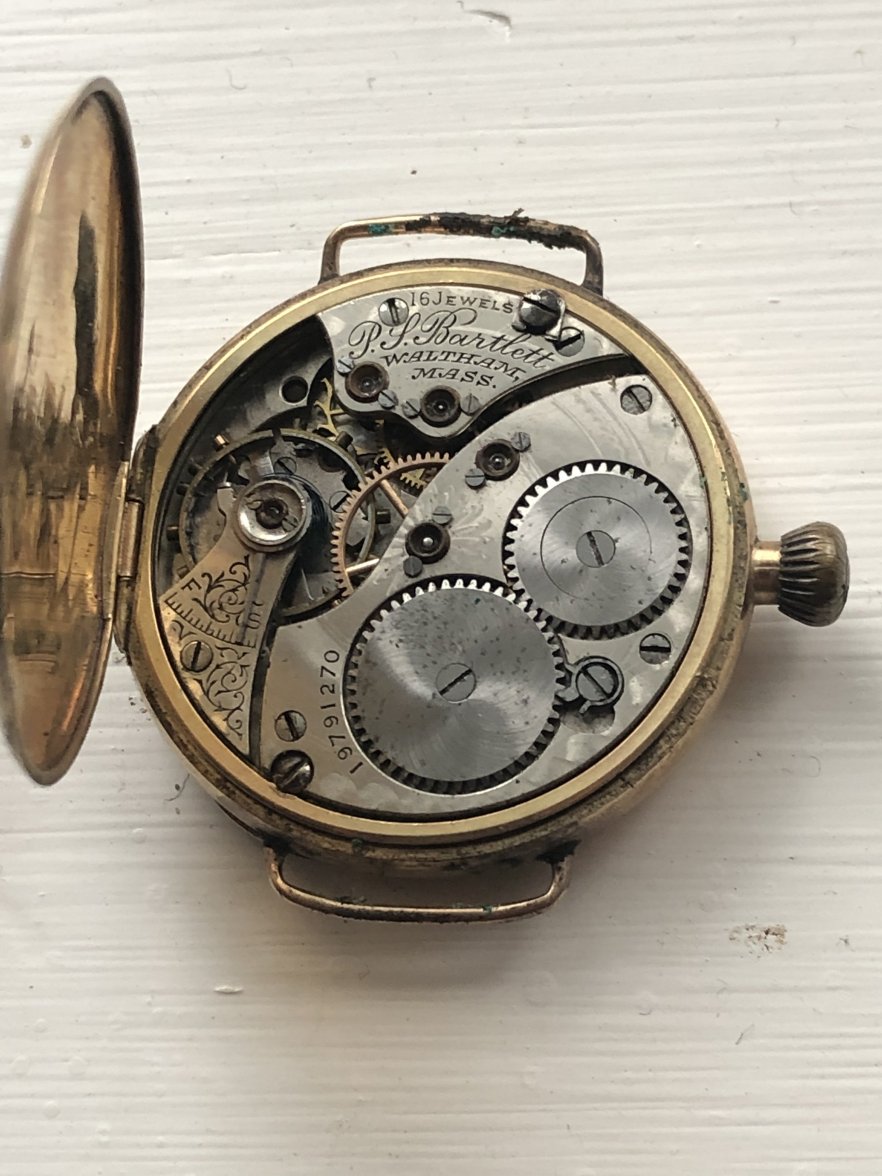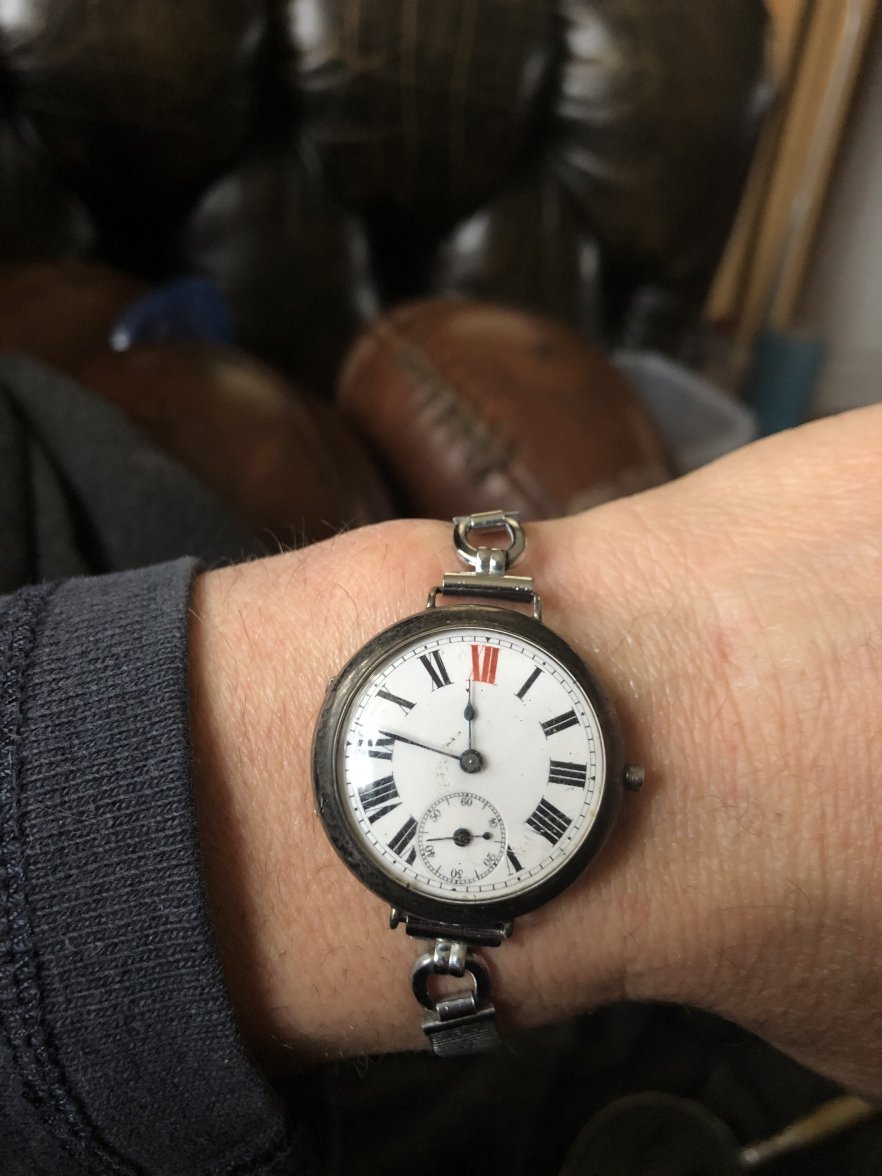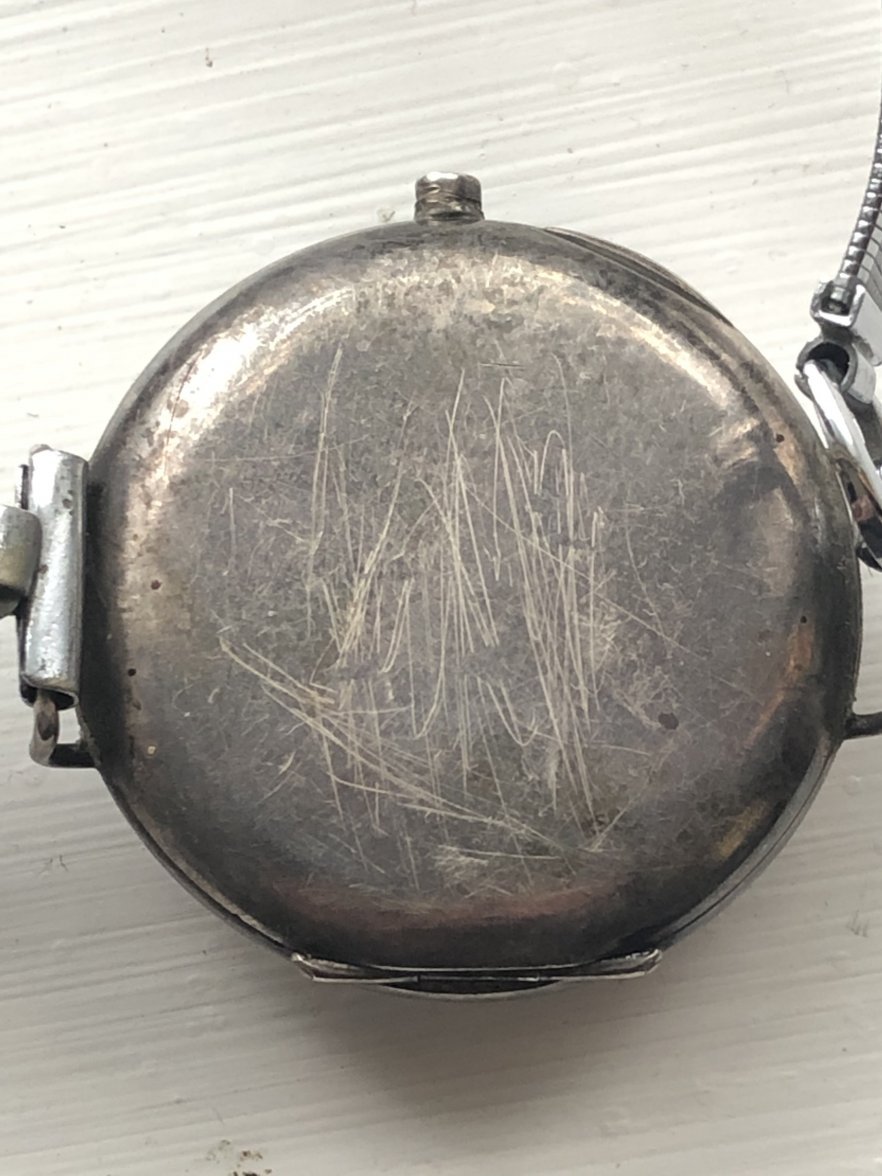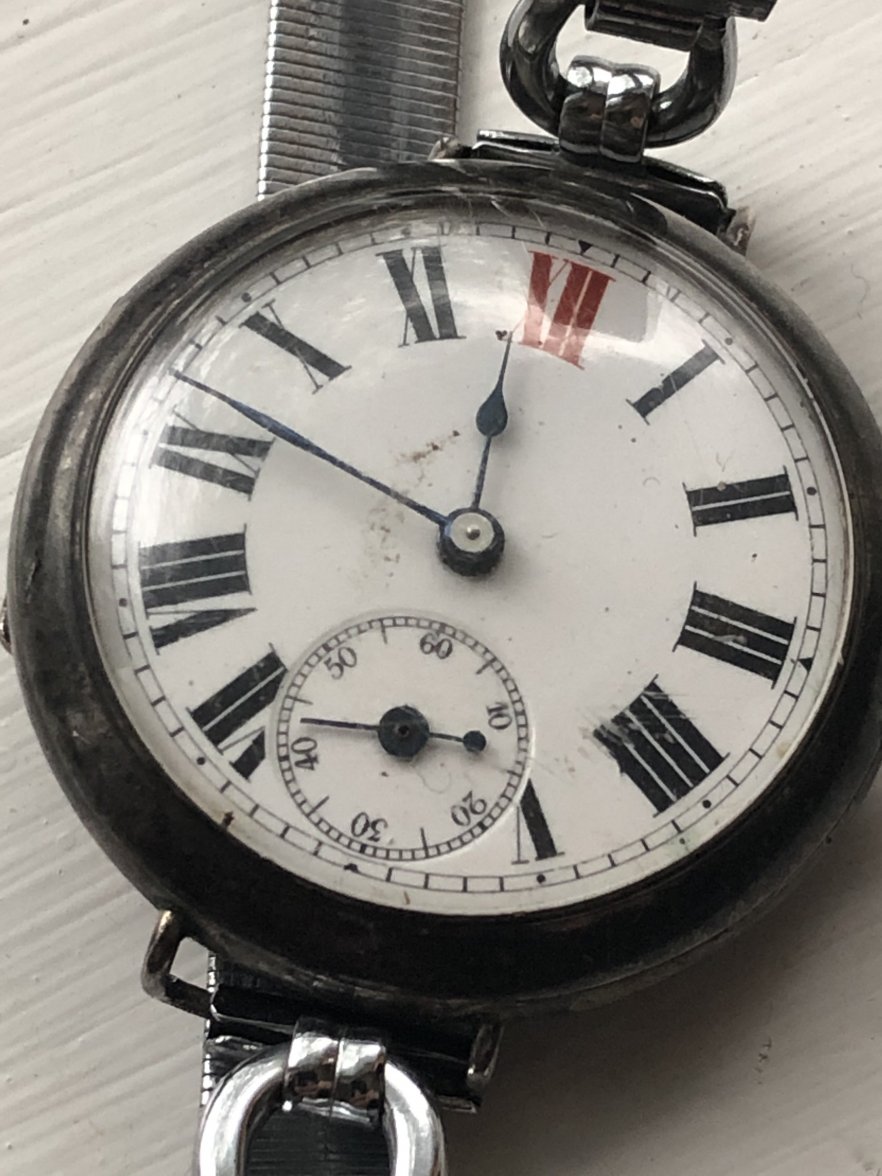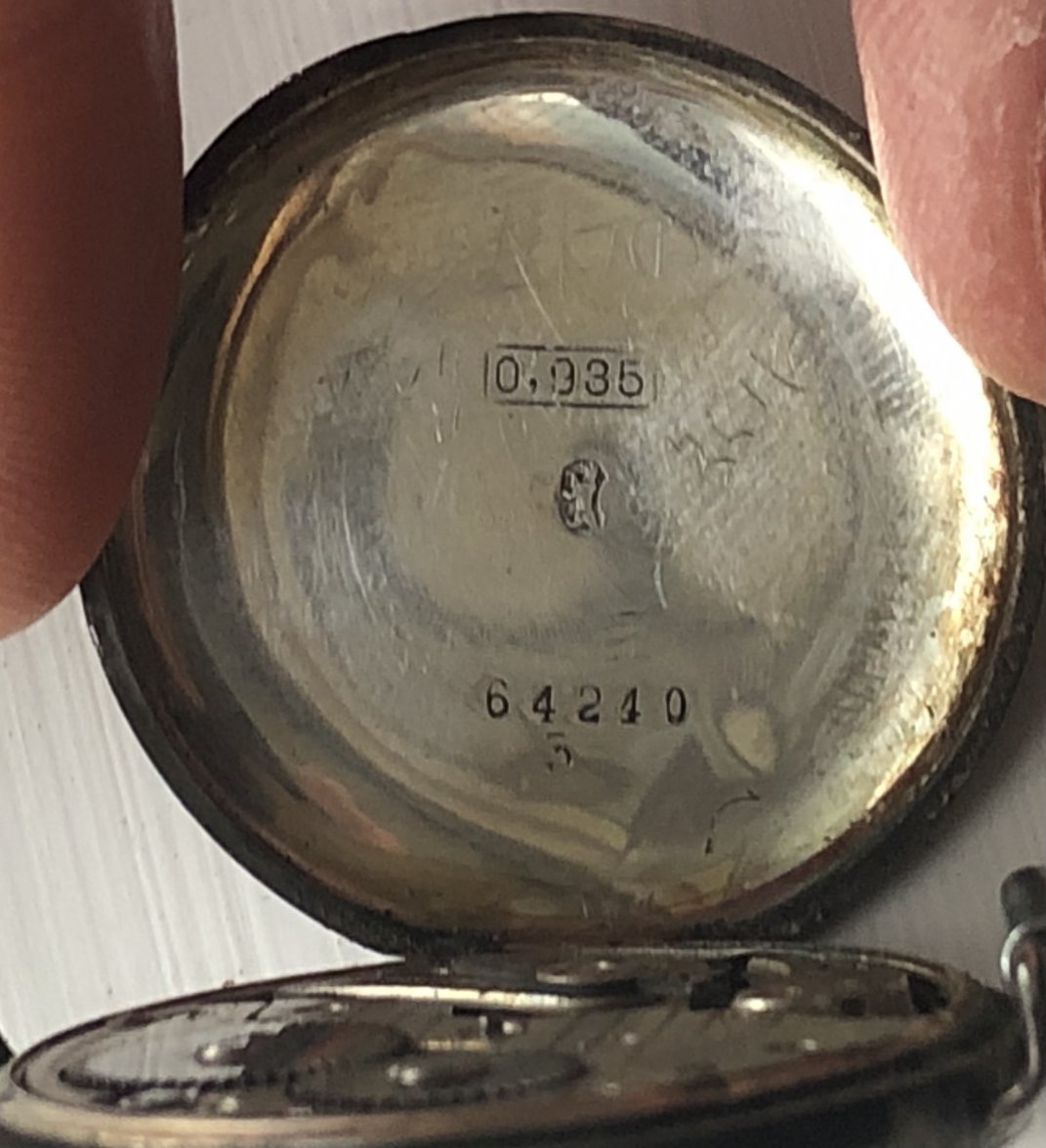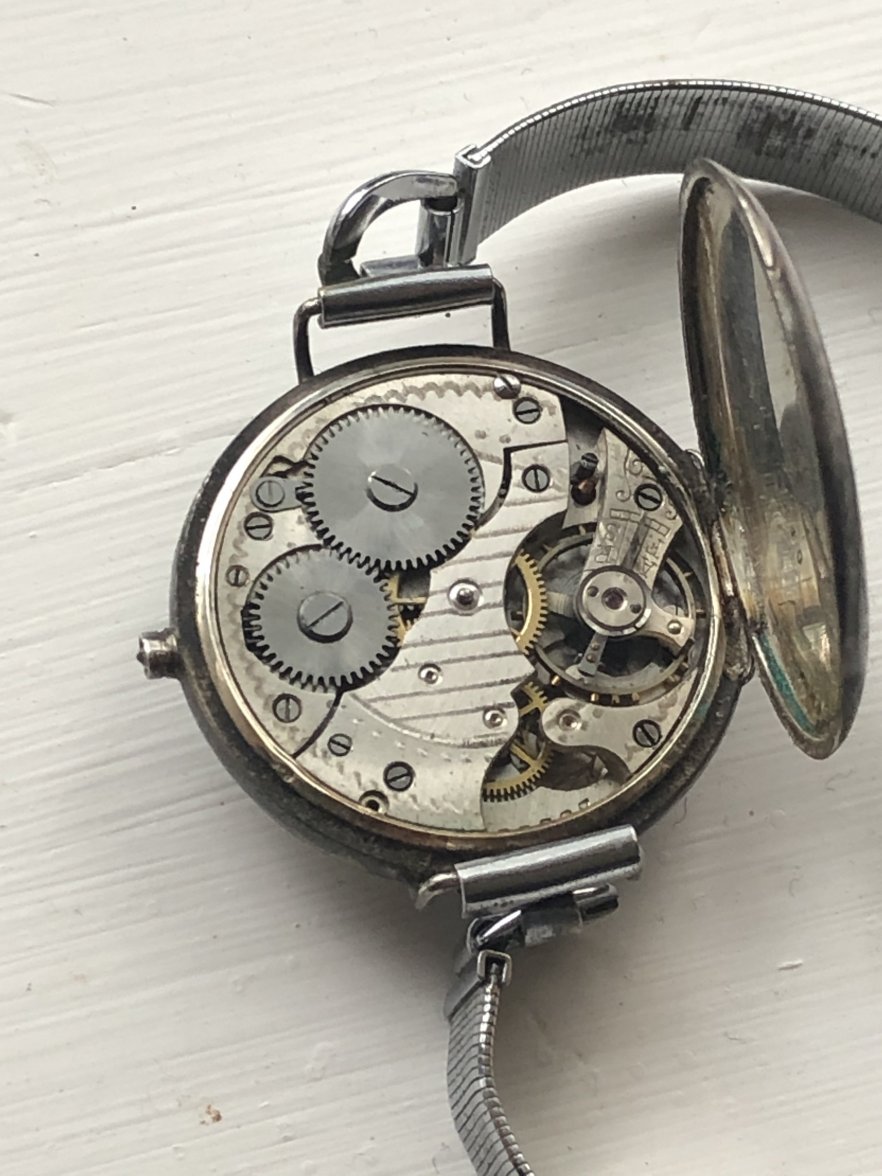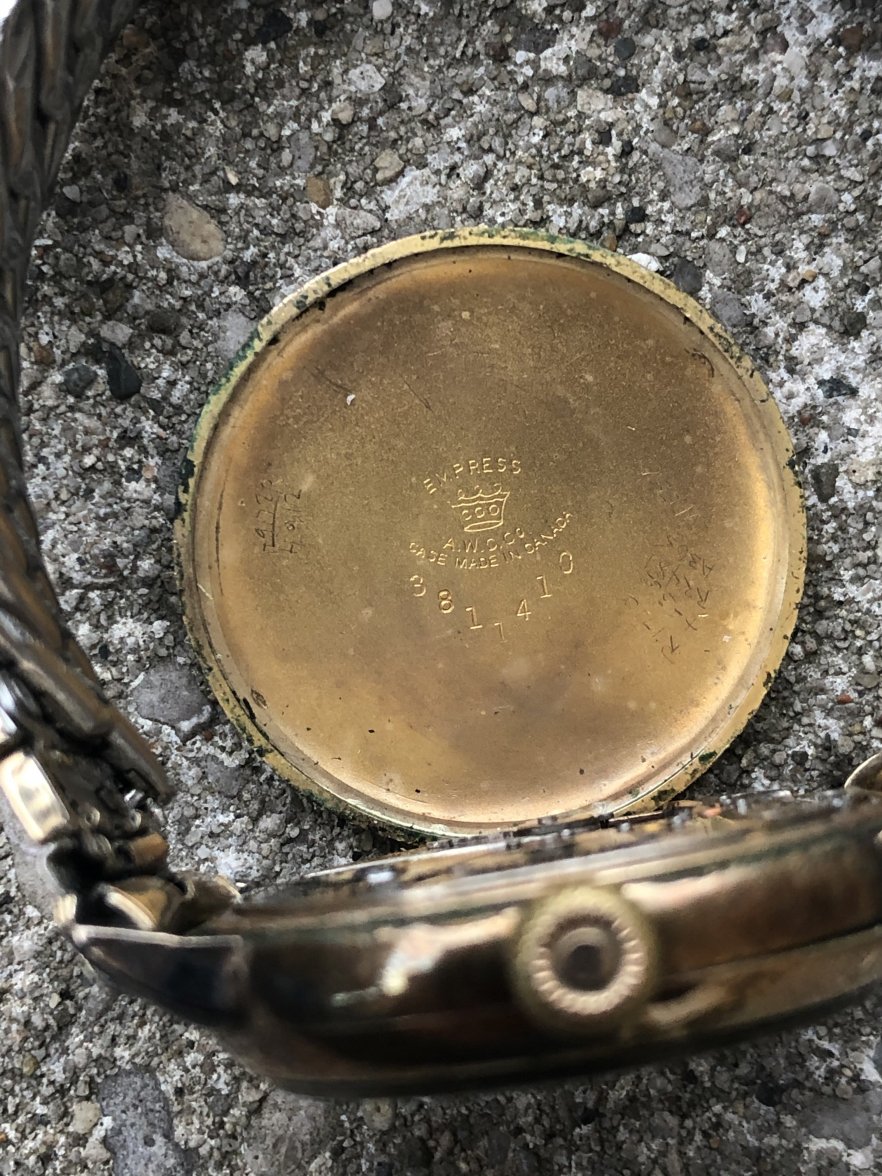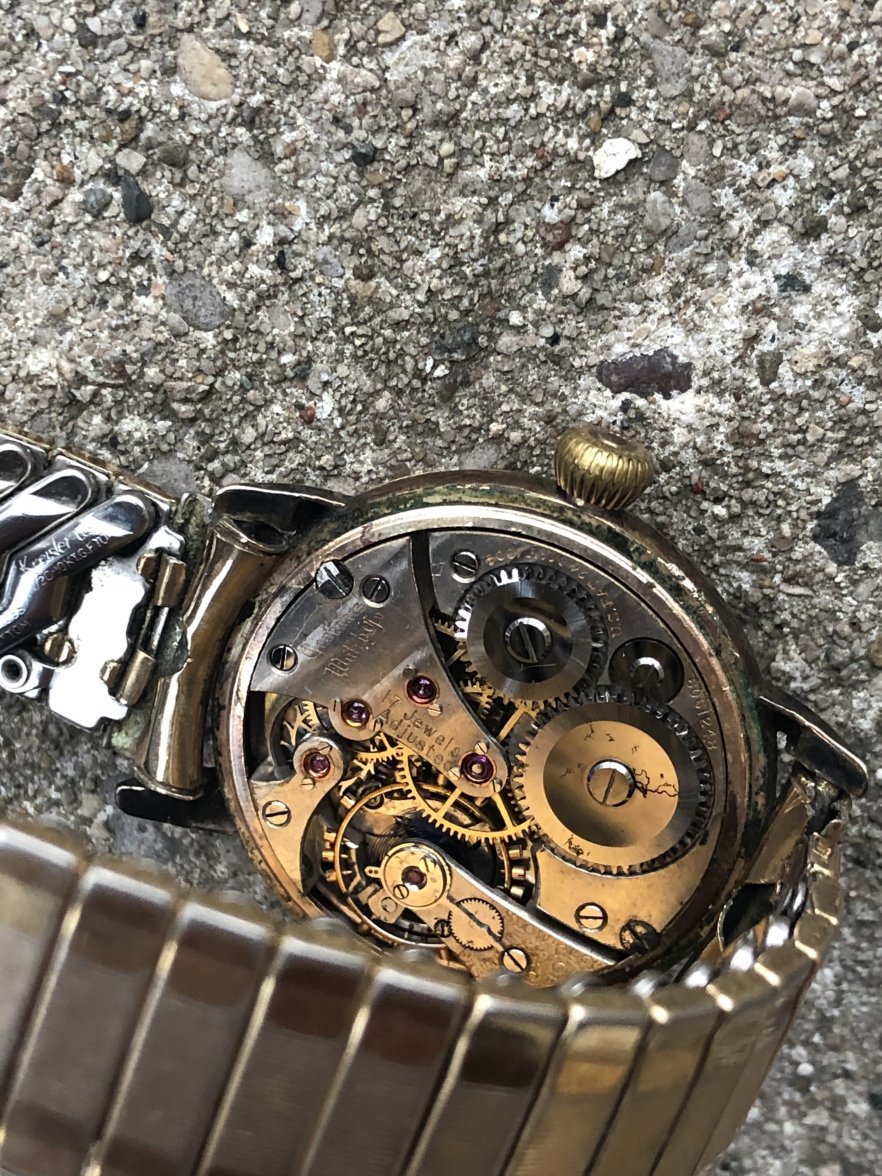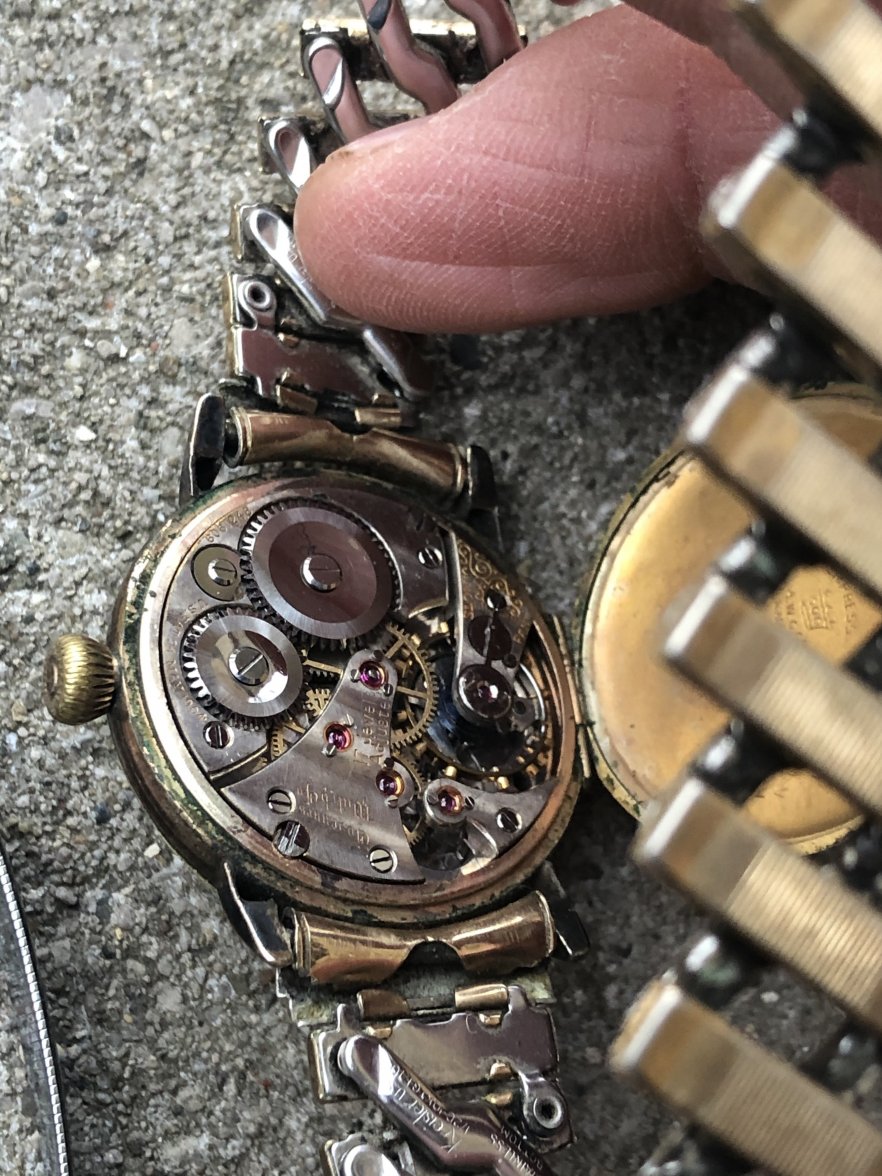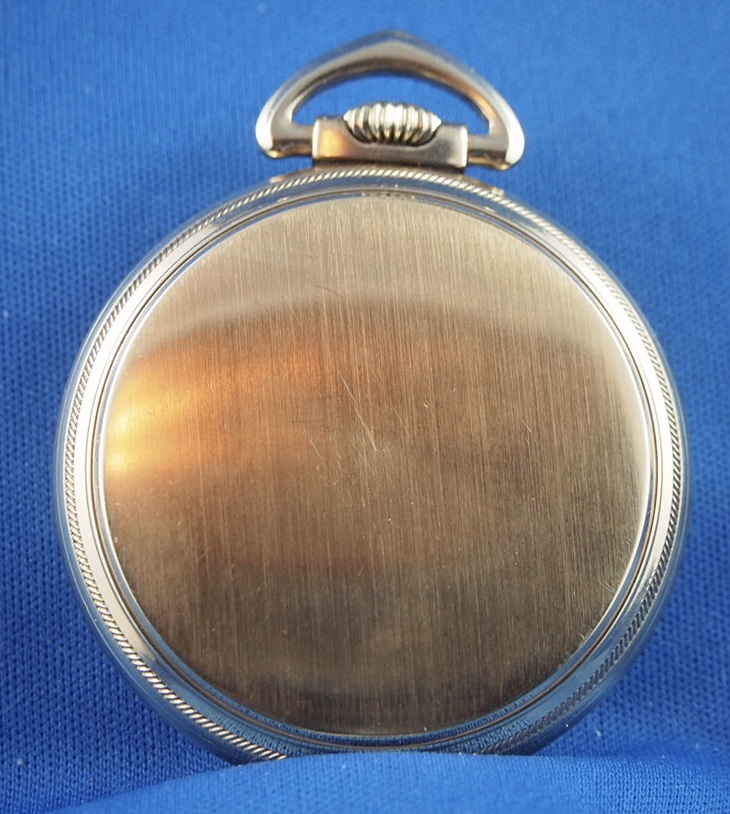Calling all Pocket Watch Buffs
Waltesefalcon
·I was perusing pocket watches on Ebay, like you do, and ran across this: https://www.ebay.com/itm/Vintage-PL...-/224392898486?_trksid=p2349624.m46890.l49292
It's way too rich for my blood but pretty stunning.
It's way too rich for my blood but pretty stunning.
This website may earn commission from Ebay sales.
Canuck
·Canuck
·There is a whole branch of collectible pocket watches that we haven’t touched on.
There was a time in the evolution of railroads when the job was very risky. So risky, in fact, that railroad employees were not able to purchase insurance coverage. Or, at the very least, buy insurance coverage for obscene premiums.
Enter the railroad “Brotherhoods”. These fraternal organizations were formed to provide a sense of unity, pride in their particular part of railroading, but also insurance against injury or death, as well as support for the railroader’s families in the advent of tragedy.
American watch companies were quick to offer “brotherhood” watches. Railroad standard watches with the dials decorated with coloured vitreous enamel representations of the particular railroad brotherhood’s logos. These watches were advertised in the trade papers of the various unions. Here is an example that sold at auction by Bonhams in New York, in 2016, for $ 1,625.00 U S. The logo on the dial represents the Brotherhood of Railway Trainmen. This particular watch is 18-size, 21-jewels, and is likely a Hamilton grade 940. It was offered by the Ball Watch Co., grade 999. More can be read, here:
https://www.bonhams.com/auctions/24267/lot/4/?category=list
A Wikipedia article can tell you more about these railroad brotherhoods.
https://en.m.wikipedia.org/wiki/List_of_American_railway_unions
There was a time in the evolution of railroads when the job was very risky. So risky, in fact, that railroad employees were not able to purchase insurance coverage. Or, at the very least, buy insurance coverage for obscene premiums.
Enter the railroad “Brotherhoods”. These fraternal organizations were formed to provide a sense of unity, pride in their particular part of railroading, but also insurance against injury or death, as well as support for the railroader’s families in the advent of tragedy.
American watch companies were quick to offer “brotherhood” watches. Railroad standard watches with the dials decorated with coloured vitreous enamel representations of the particular railroad brotherhood’s logos. These watches were advertised in the trade papers of the various unions. Here is an example that sold at auction by Bonhams in New York, in 2016, for $ 1,625.00 U S. The logo on the dial represents the Brotherhood of Railway Trainmen. This particular watch is 18-size, 21-jewels, and is likely a Hamilton grade 940. It was offered by the Ball Watch Co., grade 999. More can be read, here:
https://www.bonhams.com/auctions/24267/lot/4/?category=list
A Wikipedia article can tell you more about these railroad brotherhoods.
https://en.m.wikipedia.org/wiki/List_of_American_railway_unions
Edited:
TexOmega
·I was offered this Beautiful Bunn Special by a dear friend who had no children and wanted to pass a family item to someone to carry it forward.
We came to an equitable agreement, easily.
Circa 1921
16s 21j Rayed pattern, Plum colored hands
RR grade but with it's decorative metal dial not RR approved, but gorgeously handsome, nonetheless.
I will carry it and pass it along later along with the story about who carried it before me.
Waltesefalcon
·I love the sunburst damaskeen on these Bunn Specials, it's one of my favorite patterns.
Canuck
·
I was offered this Beautiful Bunn Special by a dear friend who had no children and wanted to pass a family item to someone to carry it forward.
We came to an equitable agreement, easily.
Circa 1921
16s 21j Rayed pattern, Plum colored hands
RR grade but with it's decorative metal dial not RR approved, but gorgeously handsome, nonetheless.
I will carry it and pass it along later along with the story about who carried it before me.
Here’s the skinny on @TexOmega ‘s sharp Illinois. Railroad grade as the data sheet says, but the dial and hands wouldn’t pass inspection. However, it wouldn’t surprise me if a General Time Inspector on a railroad, somewhere, might accept it.
https://pocketwatchdatabase.com/search/result/illinois/3909219
I have a Waltham Crescent Street, 16-size, 21-jewel model that passed the standards when it was put into service in 1917. It was passed on to one of the original owner’s grandsons who started with C P Rail in the late 1960s. This 50 + year old watch was accepted, again! But over those 50+ years, the standards continued to change. I sometimes wonder if the General Time Inspector for the railroad relied on the railroad watch inspector’s (watchmaker) assessment as to whether the watch should be accepted, or not.
Today, a watch would pass inspection if a/ it told 24-hour time, b/ was reliable, and c/ was accurate to within 30 seconds per week. Enter Walmart. A major supplier of watches that meet current standards! Gone is the day of the railroad watch inspector. Railways today are automated to such an extent that to-the-second time performance for the crew on the train, may no longer be necessary. My understanding (for example) is that Canadian Pacific Railway is computer controlled from Vancouver, B C, to Thunder Bay, Ontario. Except for some track in what is called “dark territory” which are not controlled by the system.
Canuck
·When I was graduating high school my father told me it was customary to give someone a watch to commemorate the milestone. What did I know about watches, I knew Rolex and Tag Heuer because I had a $20 New York special Tag s/el knockoff and never thought a real one was even an option. So being me I thought gold pocket watch. He had a friend who was a jewelry dealer and brought home a few different types with and without the hunting case a varying levels of engraving. I made my choice. I used to wear it a lot and utilized the 5th pocket of my jeans but too many mishaps where I now only use it for special occasions. I just recently had it serviced and it is gorgeous and working beautifully.
Elgin Watch Co. grade 210, size 16, 7 jewels 14k gold hunting case. It also had a nice gold chain not pictured.
@cjfrancese79 ,
Good looking Elgin! You said “too many accidents” when you wore the watch, as a younger fellow. The damage from those “accidents” isn’t obvious in your pictures. That elaborately engraved case is a work of the engraver’s art, seldom seen today, except on antiques like yours.
Here’s the skinny on @cjfrancese79 ’s Elgin. The movement isn’t rare or unusual, but the case makes it into an exceptional watch!
https://pocketwatchdatabase.com/search/result/elgin/9881110
Maybe, now that you have matured, you can enjoy it the way you enjoyed it, back in your “salad days”.
Canuck
·Here’s another artifact from the Usher Gallery. For anyone interested in the artifacts in the Usher Gallery, here is a link to a Wikipedia article. The artifacts in the gallery are all part of a wealthy man’s private collection.
https://en.m.wikipedia.org/wiki/Usher_Gallery
The item herein is from the collection. While it is shown in three pieces, it began life as a watch, possibly in the early 17th century. Take note of the fact that it has only an hour hand. I don’t know the details of the movement, but I think it is a safe bet that it has a verge escapement, and a fusee. These watches might run hours out in a day, so there was really no need for a minute hand. They are key wound and set from the back of the movement. The watch is probably French made. These watches were known to be rather unreliable, occasionally stopping for no known reason. But what they lacked in mechanical refinement, they were an aesthetic tour de force.
The front and rear covers are hand decorated in turquoise vitreous enamel, the case being possibly made of gilded brass. These cases were decorated by dissolving gold in mercury, the item being hand painted in this amalgam, then the mercury being “boiled off” by exposure to open flames. Gilders of the era, usually lived very short lives, often dying of mercury poisoning! The colour of the stones makes them difficult to nail down, but they look like they might be rhodolite or almandine garnet. These forms of garnet often display purplish/red tones. The garnet comes in every colour but blue, the most common form being pyrope garnet which is a dark brownish red. These stones are bezel set.
The dial is similarly decorated by hand with turquoise vitreous enamel, the white vitreous enamel chapter ring being decorated by hand. During the time this watch was made, firing vitreous enamel items was done in kilns (ovens) that were fired with coke. The rate of spoilage was high because of fly ash that often contaminated the enamel while it was in a molten state.
As you can see, the hinges that held the movement in the case, and the front and back covers together, are broken. My, how things have changed over the last 350 years!
https://en.m.wikipedia.org/wiki/Usher_Gallery
The item herein is from the collection. While it is shown in three pieces, it began life as a watch, possibly in the early 17th century. Take note of the fact that it has only an hour hand. I don’t know the details of the movement, but I think it is a safe bet that it has a verge escapement, and a fusee. These watches might run hours out in a day, so there was really no need for a minute hand. They are key wound and set from the back of the movement. The watch is probably French made. These watches were known to be rather unreliable, occasionally stopping for no known reason. But what they lacked in mechanical refinement, they were an aesthetic tour de force.
The front and rear covers are hand decorated in turquoise vitreous enamel, the case being possibly made of gilded brass. These cases were decorated by dissolving gold in mercury, the item being hand painted in this amalgam, then the mercury being “boiled off” by exposure to open flames. Gilders of the era, usually lived very short lives, often dying of mercury poisoning! The colour of the stones makes them difficult to nail down, but they look like they might be rhodolite or almandine garnet. These forms of garnet often display purplish/red tones. The garnet comes in every colour but blue, the most common form being pyrope garnet which is a dark brownish red. These stones are bezel set.
The dial is similarly decorated by hand with turquoise vitreous enamel, the white vitreous enamel chapter ring being decorated by hand. During the time this watch was made, firing vitreous enamel items was done in kilns (ovens) that were fired with coke. The rate of spoilage was high because of fly ash that often contaminated the enamel while it was in a molten state.
As you can see, the hinges that held the movement in the case, and the front and back covers together, are broken. My, how things have changed over the last 350 years!
DaveK
·The PocketWatchDatabase posted this on Instagram today. An 1886 directive from the CPR saying all watches must be converted to the 24hr dial using a paper insert. Anyone ever seen any of the inserts?
Canuck
·I have seen dials converted to 24-hour reading, but it has been some time. I don’t recall whether there was ever a railroad standard watch among them. Very interesting. Back in the day, I am fairly certain that the watch companies were outfitted to supply 24-hour dials which railroad watch inspectors would install, at the time of a scheduled servicing. In fact, I suspect a well equipped shop might even have maintained an inventory of 24-hour dials on hand, just for the purpose.
Strangely, many Seth Thomas railway standard clocks remained with their original white, painted, 12-hour dials until CP changed them to 24-hour dials, circa 1969! As an example, during a recent model train show, a friend and I exhibited two Seth Thomas World, 15-day, octagon drop clocks. The one on the left has the original painted dial which was still on it when removed from service. Mine, on the right, has a hand-painted facsimile of the silk-screened aluminum dial which was fitted to all Seth Thomas clocks in the CPR system, in 1969. I also have a ST World with the aluminum dial. Go figure!
Edit: I’ve added a picture of a ST World that has the CPR silk screened aluminum dial from 1969.
Thanks @DaveK .
Strangely, many Seth Thomas railway standard clocks remained with their original white, painted, 12-hour dials until CP changed them to 24-hour dials, circa 1969! As an example, during a recent model train show, a friend and I exhibited two Seth Thomas World, 15-day, octagon drop clocks. The one on the left has the original painted dial which was still on it when removed from service. Mine, on the right, has a hand-painted facsimile of the silk-screened aluminum dial which was fitted to all Seth Thomas clocks in the CPR system, in 1969. I also have a ST World with the aluminum dial. Go figure!
Edit: I’ve added a picture of a ST World that has the CPR silk screened aluminum dial from 1969.
Thanks @DaveK .
Edited:
Canuck
·On the subject of railroad standard watches with 24-hour dials, can you image the possibility of accurately reading the time on a watch with a 24-hour dial, and TWO HOUR hands, like this Hamilton 992B that I serviced for a friend, several years ago. The dual hour hand came in handy for crews who regularly crossed a meridian on their route.
Canuck
·An interesting video on the Waltham Watch Co.
https://youtu.be/jRVsjjdX9_I
Also, one on the Illinois Watch Co.
https://youtu.be/vTQT6PwgJTA
https://youtu.be/jRVsjjdX9_I
Also, one on the Illinois Watch Co.
https://youtu.be/vTQT6PwgJTA
Duracuir1
··Never Used A KodakAn interesting video on the Waltham Watch Co.
Also, one on the Illinois Watch Co.
https://youtu.be/vTQT6PwgJTA
Canuck
·@Duracuir1 ,
The anonymous one has only 7-jewels. Don’t get your hopes up! Prospects might be better for the Waltham. I like to remind folks that the money spent resurrecting watches that need a lot of work comes out of your watch collecting budget. The more you spend repairing your “mistakes”, the fewer watches you’ll collect. Repairing a wreck will NOT increase the value of the item by the amount you spend on the repair. Heroic measures regarding a repair are okay, once in a while, when it is a “special” watch. But I recommend you don’t get into the habit!
The anonymous one has only 7-jewels. Don’t get your hopes up! Prospects might be better for the Waltham. I like to remind folks that the money spent resurrecting watches that need a lot of work comes out of your watch collecting budget. The more you spend repairing your “mistakes”, the fewer watches you’ll collect. Repairing a wreck will NOT increase the value of the item by the amount you spend on the repair. Heroic measures regarding a repair are okay, once in a while, when it is a “special” watch. But I recommend you don’t get into the habit!
noelekal
··Home For Wayward WatchesAdditional noob questions for the thread.
Are there some particularly bad brands or movements that should be avoided?
Are key wind pocket watches less desireable?
Were key wind watches mostly done by 1900?
Are there any really good 19th century pocket watch movements for the casual user?
I have to be out of town for the weekend on family responsibilities so can't look in until Monday.
Are there some particularly bad brands or movements that should be avoided?
Are key wind pocket watches less desireable?
Were key wind watches mostly done by 1900?
Are there any really good 19th century pocket watch movements for the casual user?
I have to be out of town for the weekend on family responsibilities so can't look in until Monday.
Canuck
·I have been collecting watches for 45 years. And even now, I don’t have all the answers to your questions. Most of us start small, become involved, take pleasure in your wins, swallow your mistakes, and learn by osmosis.
What is a “bad brand” to some is what some people collect. Bad watches? Yes! If you learn how to judge the condition of watches (that takes years), any watch can be good. Without knowledge, any watch can be bad.
Are key winders less desirable? Some people collect them. But if you like them, avoid Swiss or English ones! U S made ones only!
Were key winders dead by 1900? I think they were dead by about 1885. However, I once ran into an 1883 model Waltham that was a key winder!
Good 19th century watches for the casual user? I’ll express a bias here. My pocket watch collection is probably 40 % 19th century, and 60 %, the first half of the 20th century. It sounds to me like your interests might lean toward 19th century watches. If you go in that direction, mistakes can cost you a lot of money! Older watches come with a higher probability of mechanical problems (age, previous bad repairs, difficulty of finding parts, difficulty in finding people you’d trust to work on them). Later ones may have some similar problems, but parts may be more available, and generally, they are easier to work on. I count myself fortunate because I do my own repairs.
You may have read in this thread, that a good place to start might be a Hamilton 992B (lots around, can be reasonably priced, some parts availability, easy to work on compared to 19th century stuff, excellent performers). Elgin grade 571, B W Raymond. Same factors as the 992B. Waltham Vanguard, particularly the later grades like the 1623 (16-size, 23-jewels) for the same reasons. But try to buy in person, rather than on line, until you have your feet wet. These watches aren’t 19th century, and they often aren’t the eye candy (they tend to be plainer, mechanically), but they have excellent upsides.
If and when you locate something you think you might like to have, post GOOD pictures here, and ask for help. Know what the return privileges are, keep a budget in mind, prepare to make mistakes, and figure on having what you buy, serviced.
What is a “bad brand” to some is what some people collect. Bad watches? Yes! If you learn how to judge the condition of watches (that takes years), any watch can be good. Without knowledge, any watch can be bad.
Are key winders less desirable? Some people collect them. But if you like them, avoid Swiss or English ones! U S made ones only!
Were key winders dead by 1900? I think they were dead by about 1885. However, I once ran into an 1883 model Waltham that was a key winder!
Good 19th century watches for the casual user? I’ll express a bias here. My pocket watch collection is probably 40 % 19th century, and 60 %, the first half of the 20th century. It sounds to me like your interests might lean toward 19th century watches. If you go in that direction, mistakes can cost you a lot of money! Older watches come with a higher probability of mechanical problems (age, previous bad repairs, difficulty of finding parts, difficulty in finding people you’d trust to work on them). Later ones may have some similar problems, but parts may be more available, and generally, they are easier to work on. I count myself fortunate because I do my own repairs.
You may have read in this thread, that a good place to start might be a Hamilton 992B (lots around, can be reasonably priced, some parts availability, easy to work on compared to 19th century stuff, excellent performers). Elgin grade 571, B W Raymond. Same factors as the 992B. Waltham Vanguard, particularly the later grades like the 1623 (16-size, 23-jewels) for the same reasons. But try to buy in person, rather than on line, until you have your feet wet. These watches aren’t 19th century, and they often aren’t the eye candy (they tend to be plainer, mechanically), but they have excellent upsides.
If and when you locate something you think you might like to have, post GOOD pictures here, and ask for help. Know what the return privileges are, keep a budget in mind, prepare to make mistakes, and figure on having what you buy, serviced.
Duracuir1
··Never Used A Kodak@Duracuir1 ,
The anonymous one has only 7-jewels. Don’t get your hopes up! Prospects might be better for the Waltham. I like to remind folks that the money spent resurrecting watches that need a lot of work comes out of your watch collecting budget. The more you spend repairing your “mistakes”, the fewer watches you’ll collect. Repairing a wreck will NOT increase the value of the item by the amount you spend on the repair. Heroic measures regarding a repair are okay, once in a while, when it is a “special” watch. But I recommend you don’t get into the habit!
As for the watch in question, and the ones in my previous post here, they fell on my lap. The gold Waltham was in exchange for a watch strap, my wife bought the anonymous bear mark cased example as part of a lot, and this Tavannes was in a large mason jar of watches. Cost $5.
I am learning a great deal from DMs and emails with Canuck and appreciate his rare combination of knowledge and hands on experience!
I am hoping to remove this flex band without using brute force
Canuck
·Another submission. I bought this one in the mid 1980s. I don’t remember exactly when. But it was some time after I bought my first Keystone Howard series V. This one is a bit of an anomaly, in that I am not certain which series it is! If I go by my Keystone Howard 1919 parts list, it is a series IX. I always though it was a series VII, but there isn’t a Keystone Howard series VII. If I go by the pocketwatchdatasheet.com data, it indicates it is a series IV. But my 1919 parts list doesn’t show a series IV! Very little about this watch matches the pocketwatchdatasheet.com listing for this watch. So here’s what I know about it.
- 16-size
- stem wind, stem set.
- 17-jewels
- single roller
- adjusted (likely, but not marked).
- temperature compensated
- blued steel Breguet hairspring.
- single sunk vitreous enamel dial
- Keystone rolled gold plated case
- railroad grade? No
- railroad approved? No
Every time I look at the movement in this watch, it reminds me of the layout of a Hamilton 992, which it is not. When I took it out of the vault this morning, it was fully wound, but wouldn’t run. Might it be that it was over 30 years ago since it was last cleaned? I conditioned it this morning, and it is now fine.
This watch has had little use since it was made about 110 years ago. The butler finish on the case back has minor marks, but it is as original. Today and for the next few days, I have it on my @DaveK lanyard, and I’ll likely wear it fo a few days.
- 16-size
- stem wind, stem set.
- 17-jewels
- single roller
- adjusted (likely, but not marked).
- temperature compensated
- blued steel Breguet hairspring.
- single sunk vitreous enamel dial
- Keystone rolled gold plated case
- railroad grade? No
- railroad approved? No
Every time I look at the movement in this watch, it reminds me of the layout of a Hamilton 992, which it is not. When I took it out of the vault this morning, it was fully wound, but wouldn’t run. Might it be that it was over 30 years ago since it was last cleaned? I conditioned it this morning, and it is now fine.
This watch has had little use since it was made about 110 years ago. The butler finish on the case back has minor marks, but it is as original. Today and for the next few days, I have it on my @DaveK lanyard, and I’ll likely wear it fo a few days.
DaveK
·That’s a handsome piece 😎 The red sub-seconds isn’t commonly seen (by me at least!)



